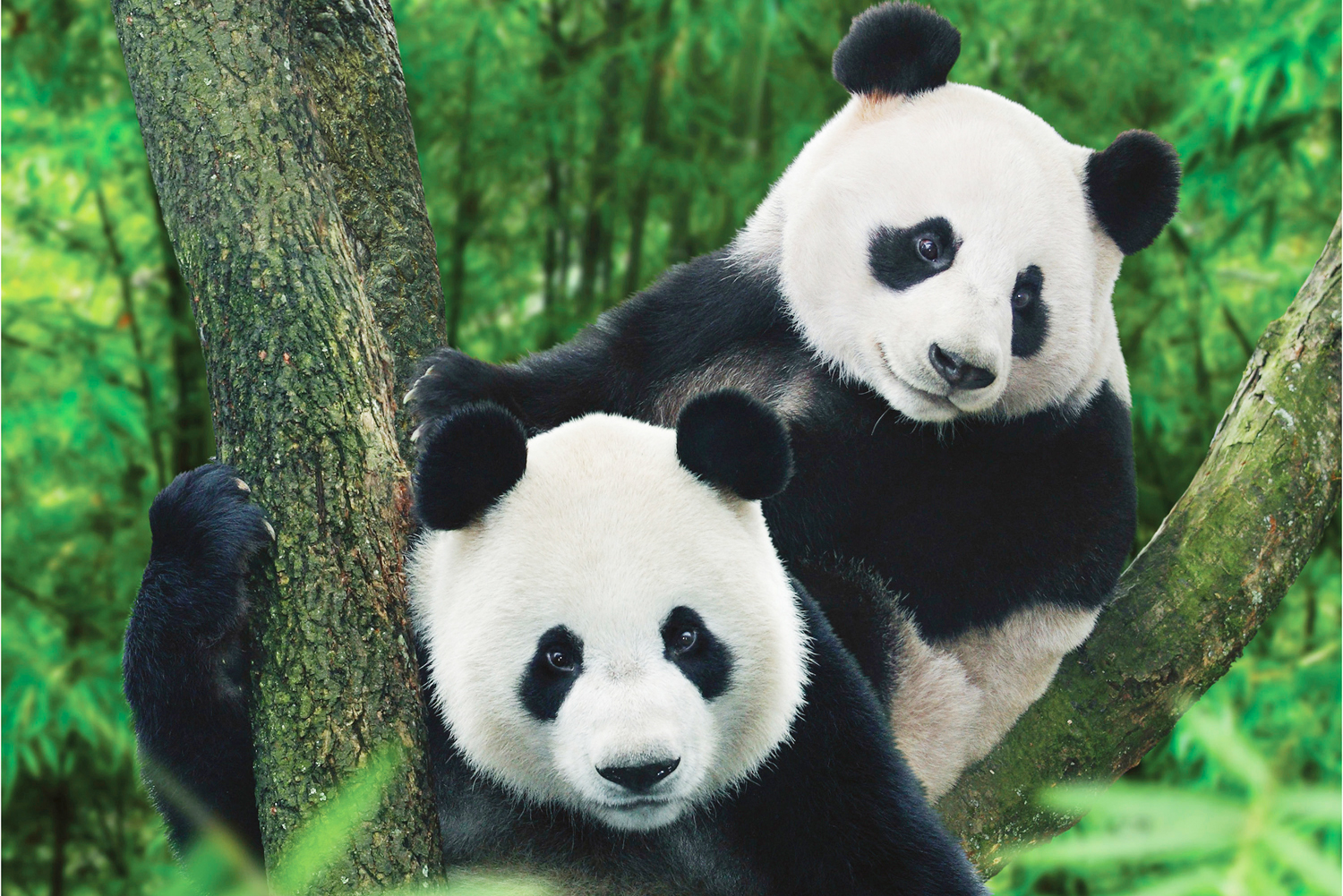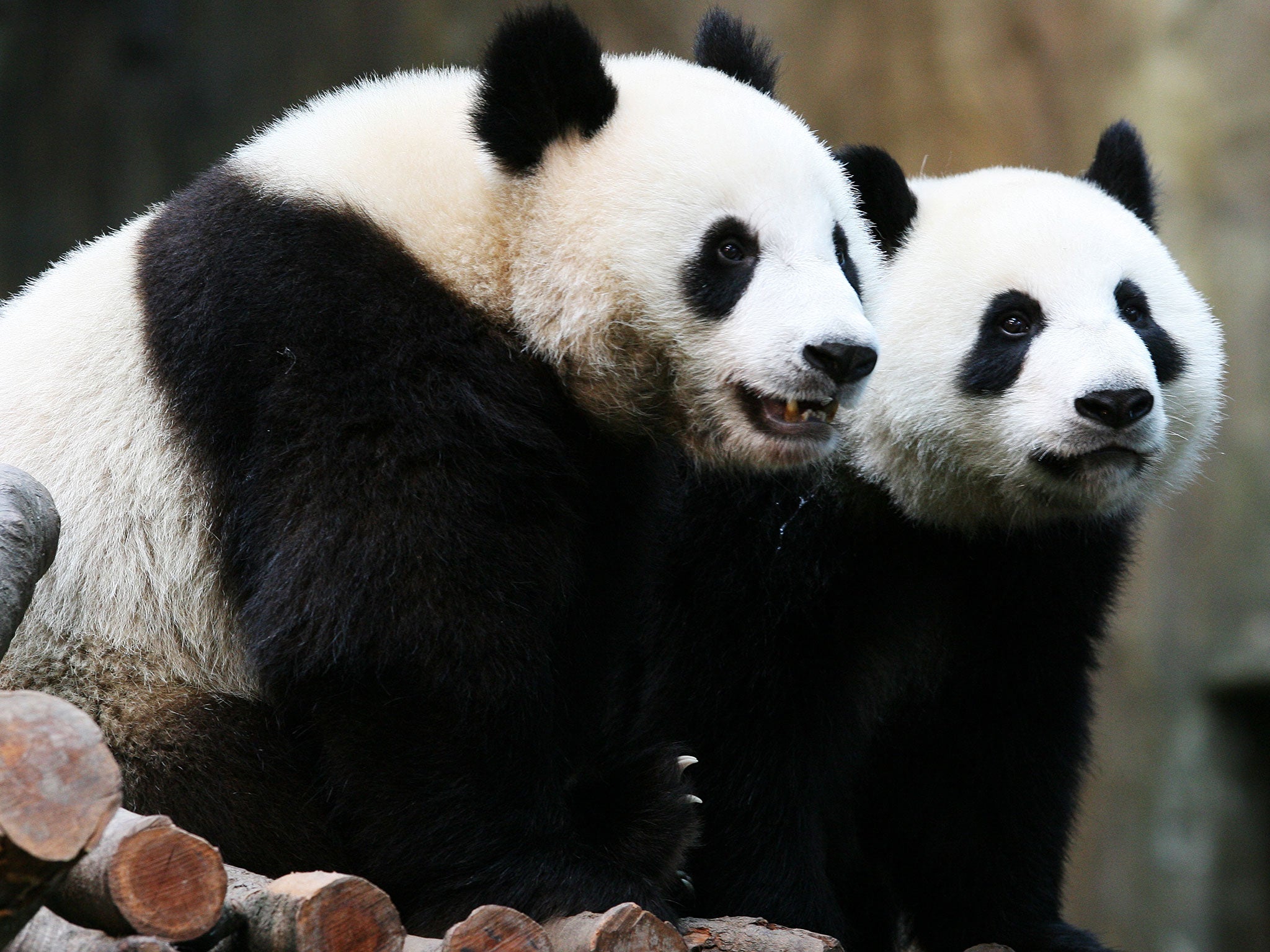

Pandas play an important role in the forest ecosystem.

They eat dozens of pounds of bamboo per day over about 12 hours of feeding, which accounts for their incredible growth from less than a pound at birth to over 200 pounds at the age of maturity.
Giant panda update#
If hiking opportunities are part of the national park, we will update you here on the more popular trail options. Depending mainly on a diet of bamboo, giant pandas live in western China. The trails of the national park are not known at this time. The favorite food is bamboo and it will eat between 20 to 30 lbs (9 to 14 kg) a day. 3 He was the longest-living male giant panda in the world under human care before his death in 2022. The giant panda is like the otter in that it seems like it is always playing even when it comes to eating. An An (giant panda) An An ( Chinese: August 1986 21 July 2022) was a male giant panda 1 residing in Hong Kong Ocean Park, 2 a gift from the Central Peoples Government of China to the Hong Kong Special Administrative Region in 1999. The males can weigh as much as 350 lbs (160 kg) while females are smaller weighing as little as 150 lbs (70 kg) although usually closer to 220 lbs (110 kg). You might say they are large furry dominoes.Īdult giant pandas typically reach a length between 3 feet 11 inches to just over 6 feet (1.2 - 1.8 m). The arms and legs are usually all black with the main part of the body displaying white fur. Fifteen to 20 cream coloured eggs are laid over a period of a few days in a shallow burrow (about 50mm deep) and are left covered with leaf litter. Mating occurs over night whereby the two snails exchange sperm to fertilise each others eggs. The predominantly white head is highlighted by black patches around the eyes as well as black pointy ears. Giant Panda Snails are hermaphroditic, meaning that individuals possess both sperm and eggs. The giant panda is renowned for its black and white coloring.

People often characterize them as the playful bears. It is not hard to find videos of giant pandas on Youtube and other video sources of giant pandas playing in the snow, rolling around, and just apparently being goofy. Giant pandas have thumbs - enlongated wrist. As few as 1,864 giant pandas live in their native habitat, while another 600 pandas live in zoos and breeding centers around the world. A cute, cuddly, and playful giant panda bear cub plays at the Beijing Zoo in China. Giant panda Giant pandas are native to central China and have come to symbolize vulnerable species. Cute Giant Panda Bear Cub Play, Beijing Zoo China. The Giant Panda is probably considered one of the cutest of all bear species. Giant Panda Facts Even though Giant pandas have a carnivores digestive system, theyve evolved to eat bamboo. Check out the latest news about Mei Xiang, Tian Tian and Xiao Qi Ji. The carnivoran giant panda has a specialized. The mountainous and forested landscapes are only enhancements to the giant panda and wilderness experience. The pandas thyroid hormone levels are also a fraction of the mammalian norm. They are probably the most popular wildlife species within and of China’s animal diversity.Īccordingly, the giant panda is the highlight of the park as well. As the bamboo disappears, the pandas simply starve to death.Giant pandas are often one of the highlights of zoos that are fortunate enough to display these beautiful creatures. The pandas find it difficult to migrate to new feeding areas because they find themselves hemmed in by human settlements. Another reason is that the bamboo that makes up most of their diet, is dying back. Destruction of its habitat, when areas are cleared for crop cultivation, is one of the main reasons for the panda's decline. The hunting of pandas has been banned for many years, so this is not the problem. There are an additional 400 pandas in captivity, according to Pandas International. The World Wildlife Fund (WWF) says there are just 1,864 pandas left in the wild. (125 kilograms), according to the San Diego. A complex process of DNA testing has now shown that giant pandas are indeed bears, and not members of the raccoon family, as was thought until recently. Giant pandas grow to be 27 to 32 inches (70 - 80 centimeters) tall at the shoulder, 4 to 5 feet (1.2 to 1.5 meters) long and can weigh up to 275 lbs. For a while, it was known as Pere David's bear. The giant panda was unknown to the western world until 1869, when it was discovered by a French missionary called Pere Armand David.


 0 kommentar(er)
0 kommentar(er)
